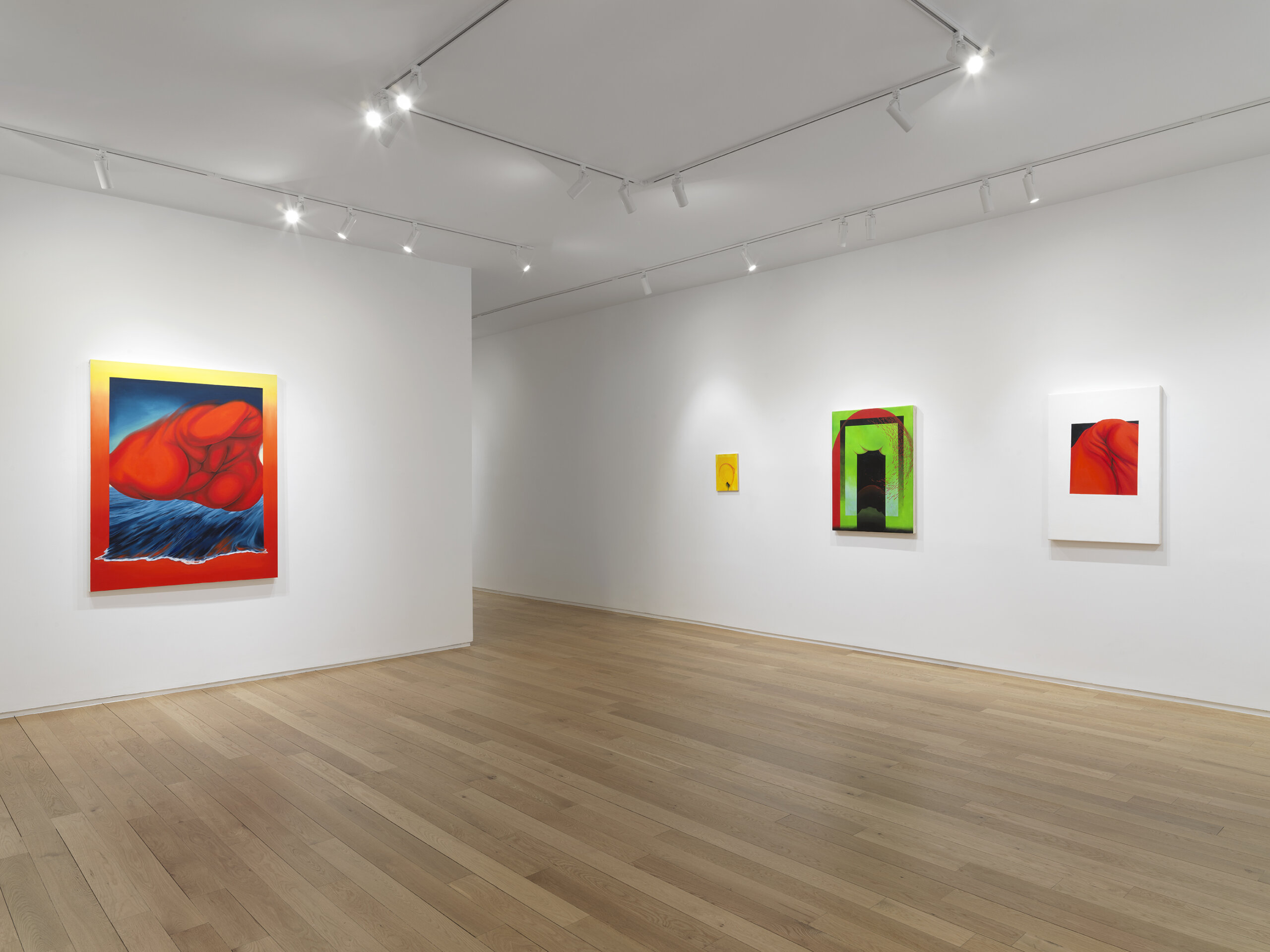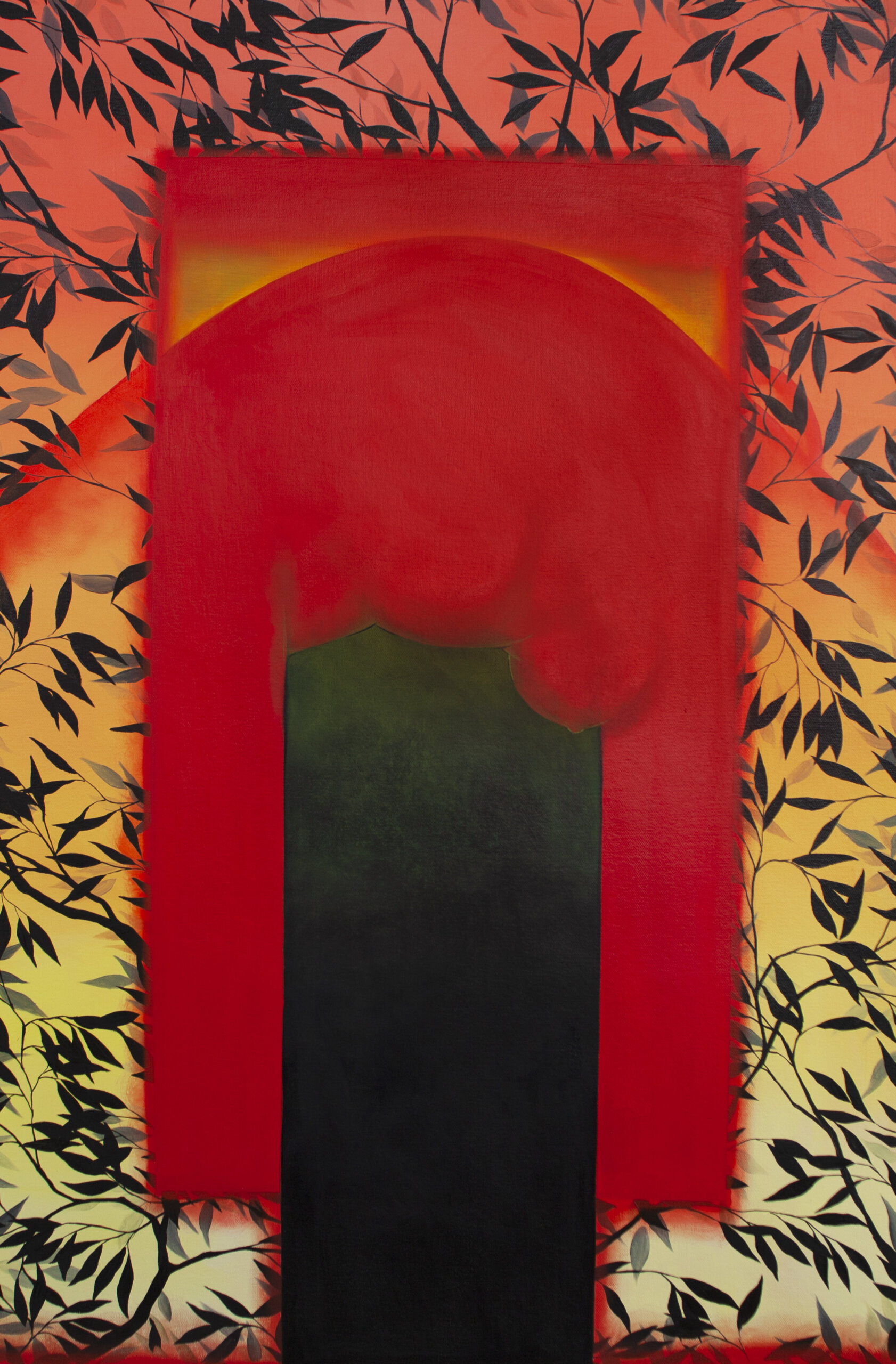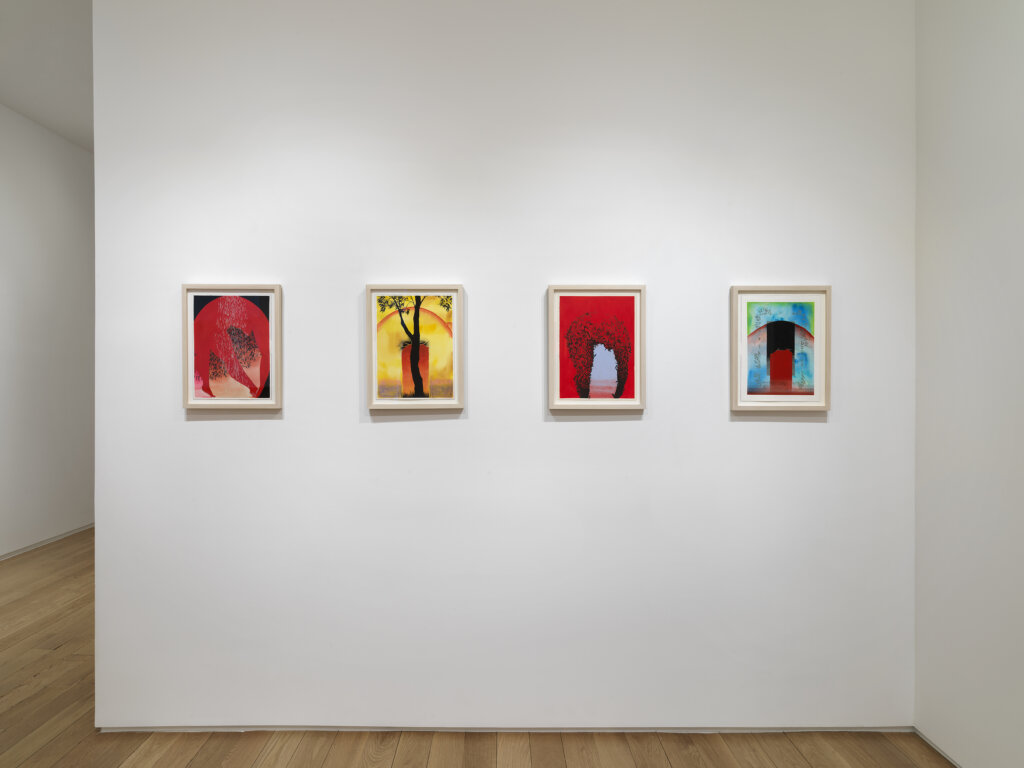By Niama Safia Sandy
April 2021

Brittney Leeanne Williams: The Arch Is a Portal Is a Belly Is a Back (March 5-April 14, 2021) at Alexander Berggruen, New York.
/what
a
long time
to be
tired
Bimpé Fageyinbo, Black Tired 2021
—–
Black women’s bodies are the foundations of our reality; the scaffolding upon which everything rests.
This is not hyperbole. This is a historical fact.
On these American shores whose very existence is moored by the Transatlantic Slave Trade, we, Black women, have survived centuries of stolen and forced labor, unequal opportunity, pay and protections. It has made our bodies simultaneously, and sometimes unwittingly, the historical site and basis of the structure of Western capitalism and the uneven society that has sprung up to buttress it. These bodies that survived the holds of the ship. The bodies who were left behind. The bodies that were forced to nurse and nourish the children of the people who enslaved them in lieu of their own children. These bodies who are quite literally the progenitor of immune systems the world over- through centuries of diverted colostrum, and stolen cells (through the immortal cell-line derived from Henrietta Lacks). The souls of those who endured so much for so long while collectively cultivating a kind of otherworldly grip on a grace-cum-gravity. It is a sure-footedness, a knowing audacity spurring us onward in a never-ending onslaught of inextricably-linked class, race and gender-based assaults. Every day we hitch our hearts on our backs attempting dismissal of and resistance against certain death – social and spiritual. We wear joy like sequins catching the light of the sun. Sometimes, this is a kind of beauty and grace that defies comprehension, and plausibility. But beneath that is a different type of exhaustion – it is a tiredness of accumulation.

Brittney Leeanne Williams, Sunset 2020, 2021, oil on canvas, 34 x 21 1/2 in. (86.4 x 54.6 cm.).
Brittney Leeanne Williams’s vibrant, saturated figures alchemize these distances between the expanses of joy, grief, healing, rhythm, and architecture to recast and cement the urgent need for Black women’s repose, and release from an often singular and static position in our societies. Williams provides us portals to perceive Black women as celestial, as universes unto themselves, large enough to be both container and contained. She paints us as dark and resonant matter. She frames us to matter simultaneously as people, as architectures of emotion and as the very landscape itself.

Brittney Leeanne Williams, A Sunset Sits Within, 2020, oil on canvas, 24 x 24 in. (61 x 61 cm.).
Through her color palette, Williams recodes and adds a register of visibility to Black women’s bodies, elemental presence and various emotive states. Her figures in their fullness are weft with the consequence and weight of the intensity/immensity of the embodied experience of Black womanhood. Viewing Williams’s tableaus, the resplendent figures in their enveloping red, blue, yellow, orange pigments allow Black women’s bodies to be seen, and perhaps more importantly considered, as human in a way that often eludes us in everyday interactions. Her fierce and fiery reds denote an urgent and explosive state of exhaustion. The rich and tranquil blues are an offering toward transformational or transcendent moments of solace. These figures move within and beyond the earthly landscape, sometimes vanishing into the supermundane upper limits of the picture plane at once connecting and disappearing into suns and moons in the cosmos.

Brittney Leeanne Williams: The Arch Is a Portal Is a Belly Is a Back (March 5-April 14, 2021) at Alexander Berggruen, New York.
For some time now, I have been considering the generative tenor of bending – as a literal gesture, as a philosophical position from which to approach and tend to one’s life, and work. It is a mechanism for rest, resetting and survival. I read Williams’s ever-present bent-back as a reminder of what we endure. It is a position toward balance, restoration, and release.
For women in particular, the gesture is a fulcrum. It launches us into life, death, and all of the pleasures in between. It is an encompassment of what it is to be human, to be a mother, to be a daughter, and the very specific joys, and wounds of both. In my own work, I center and relate to poet Toi Derricote’s notion of joy as an act of resistance against forces that feed off abject demoralization. In my life and work, particularly in recent years, I have begun to regard joy and an intentionality toward it as a generative methodology for growth, and manifested desires. Joy is indomitable, undeniable, and perhaps, in certain circumstances, a mediator and gateway often indistinguishable from cloying sorrow. There is a way that that growth can become oppressive.

Brittney Leeanne Williams, The Swing of an Embrace, 2021, oil on canvas, 40 x 30 in. (101.6 x 76.2 cm.).
Zadie Smith has placed joy and all its morphological possibilities as a particular kind of “human madness.” She calls it something that “multiplies itself dangerously.” Williams’s twinned figures take on this idea. They embrace toward the point of smothering. She makes these figures bulbous, fibrous in a way that feels like a kind of necrotizing multiplication. It’s as if she is asking what happens when an element of the foundation is corrupted by its own longings to extend and defend itself? How does one extricate from smothering love while contending with the weight of the world?

Brittney Leeanne Williams, Naomi and Ruth: Tension, 2021, oil on canvas, 40 x 27 1/2 in. (101.6 x 69.8 cm.).
Niama Safia Sandy is a New York-based cultural anthropologist, curator, producer, multidisciplinary artist and educator. Niama’s work delves into the human story, often with stories of the Global Black diaspora at its center.
In 2020, Sandy created and produced FOR/FOUR, a conversation series featuring Black women and non-binary persons in arts and culture. Shortly after the launch of the series, she helped found The Blacksmiths, a new coalition of culture workers standing together to forge support for Black liberation against anti-Black racism in the academy and at presenting institutions. Through The Blacksmiths, Niama has produced resources and public events engaging communities, activists, artists across disciplines, and more to close the gaps in appropriate opportunities for Black artists of all disciplines, curators, and administrators on the global stage.
Niama is a member of the Resistance Revival Chorus, a group of women and non-binary identifying musicians bringing song to life in the spirit of activism, collective joy and resistance. Niama is an active member of the Wide Awakes, an international open-source network radically reimagining the future through creative collaboration. She has presented work, and convened panels at the Schomburg Center for Research in Black Culture, MACAAL, Morocco, Prizm Art Fair, Maryland Institute College of Art, World Around Summit, Harvard University, Oberlin College, Rhode Island School of Design, UNTITLED Art Fair & more. Niama and her work have been featured in Teen Vogue, The Washington Post, W Magazine, Hyperallergic, OkayAfrica, and more. She has written for Artsy, Active Cultures LA, NAD NOW, and many other outlets. Niama is currently a Visiting Assistant Professor at Pratt Institute.

Brittney Leeanne Williams: The Arch Is a Portal Is a Belly Is a Back (March 5-April 14, 2021) at Alexander Berggruen, New York.
Photos: Dario Lasagni.